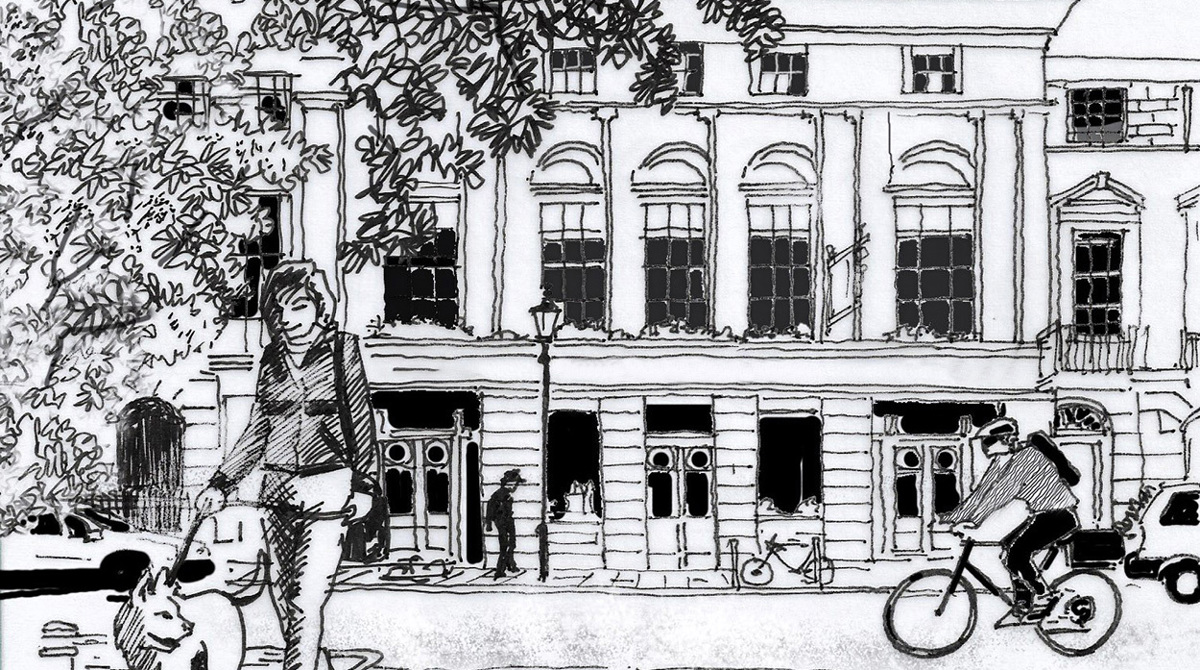
City of London
City of London area guide
London’s financial centre and major central business district, known simply as the City or the Square Mile, has grown in popularity as a residential area in recent years. Now, around 10,000 live in the area, many in architecturally outstanding new developments.
Around 400,000 people commute into the City each day, which means there is no end of choice of lively places in which to eat and drink, including several rooftop bars for those long summer nights. Transport links are outstanding.
Types of residential property in the City
For many years, the 2,000 or so apartments in the Grade II listed Barbican Centre were just about the only place you could live in the City. Completed in 1982, the Barbican’s Brutalist design has been called “one of the architectural wonders of the world”.
More recently, the City has been transformed by the erection of a number of magnificent residential towers and developments including Sir John Lyon House, One Bishopsgate Plaza, The Heron and Barts Square.
That’s not to say the Square Mile’s historic buildings have been left behind. One the world’s most iconic buildings, St Paul’s Cathedral, designed by Sir Christopher Wren and Nicholas Hawksmoor, still dominates the skyline.
Location and transport links
As you would expect with so many people coming in and out each day, the City is one of London’s best-connected places. Six mainline stations serve the area – Liverpool Street, Blackfriars, London Bridge, Cannon Street, Fenchurch Street and Moorgate.
There are nine tube stations in the City including Bank (Northern, Central and Waterloo & City lines, and DLR) and Liverpool Street (Central, Circle, Hammersmith & City, Metropolitan lines and Overground). The new Elizabeth line will stop at Farringdon and Liverpool Street.
Shopping, eating out and entertainment
The Barbican Centre is a world-class arts venue covering music, dance, theatre, film and visual arts. It also has several restaurants, bars and cafés, some of which overlook its wonderfully peaceful lake.
Elsewhere in the City, there are places for every taste and budget from Michelin-starred restaurants and classy wine bars to traditional pubs and greasy spoons, as well as several street markets, including Whitecross Street, which is well-known to City workers for its delicious food stalls.
Cheapside is the main shopping street in the City, and here you will find most of the usual high street chains. One New Change at the St Paul’s end of Cheapside is a relatively new shopping centre with some flagship fashion brands as well as restaurants and a rooftop terrace.
The Royal Exchange in Bank is more exclusive and Leadenhall Market, with its cobbled streets, has a more traditional City feel and is home to some well-known brands and interesting restaurants and bars.
Green space and activities
Green space is at a premium in the City, but there are a few places where you can escape from the hubbub including Bunhill Fields Burial Grounds near Moorgate, Postman’s Park in King Edward Street and St Dunstan’s in the East near Tower Hill. The Barbican has some open space to enjoy as well as London’s second-biggest conservatory, which has more than 1,500 tropical plants and trees.
There are a number of gyms and fitness studios in the City, including Golden Lane Sport & Fitness next to the Barbican, which has a swimming pool open to the public.
Schools
There are only a handful of schools in the City. State primary Sir John Cass’s Foundation Primary School is rated as “outstanding” by Ofsted. The Central Foundation Boys’ School in Cowper Street, EC2 is a state secondary school also rated as “outstanding”.